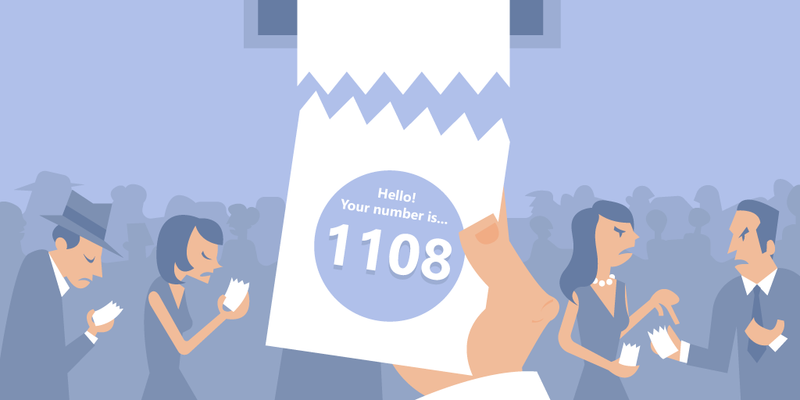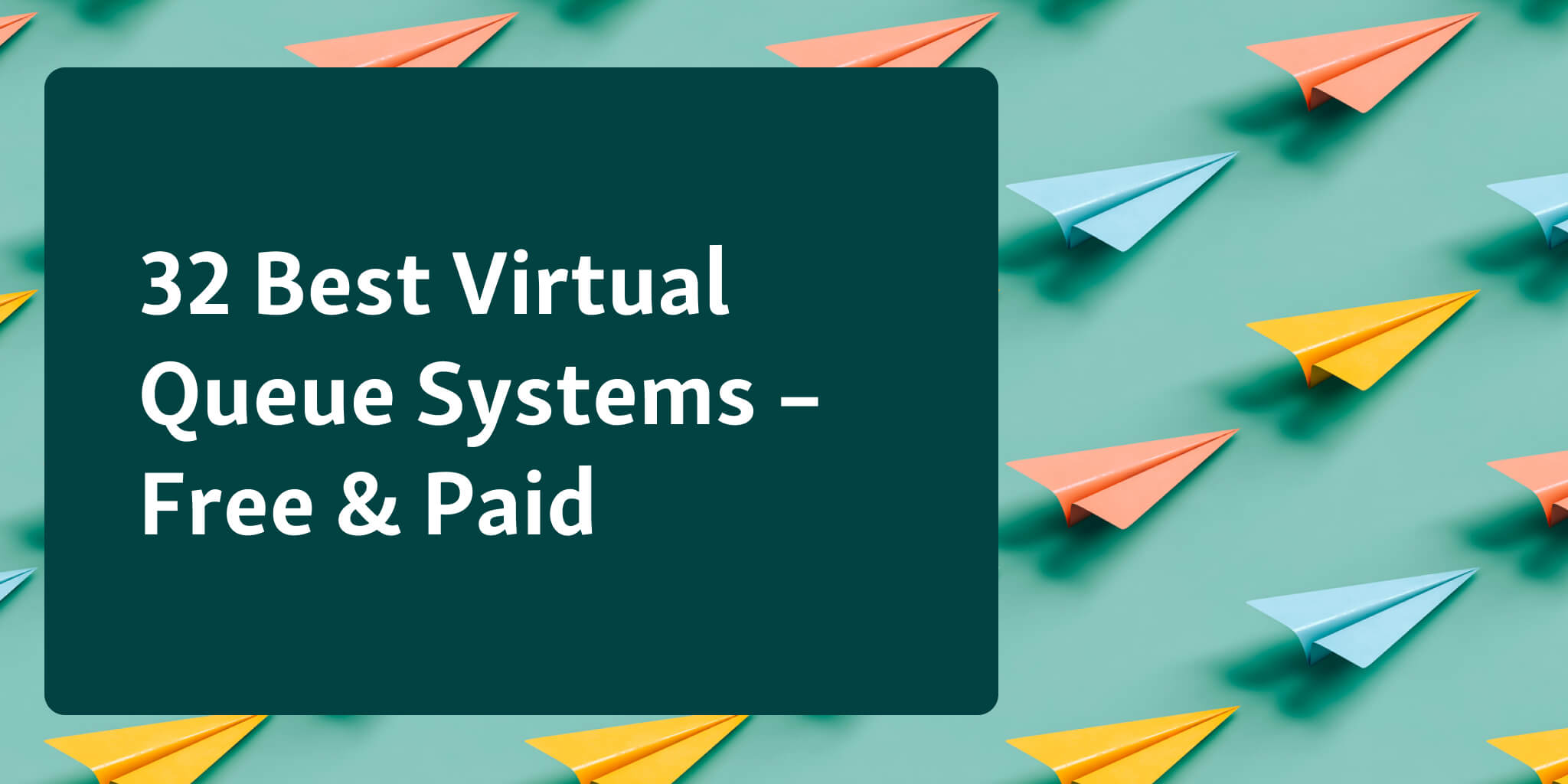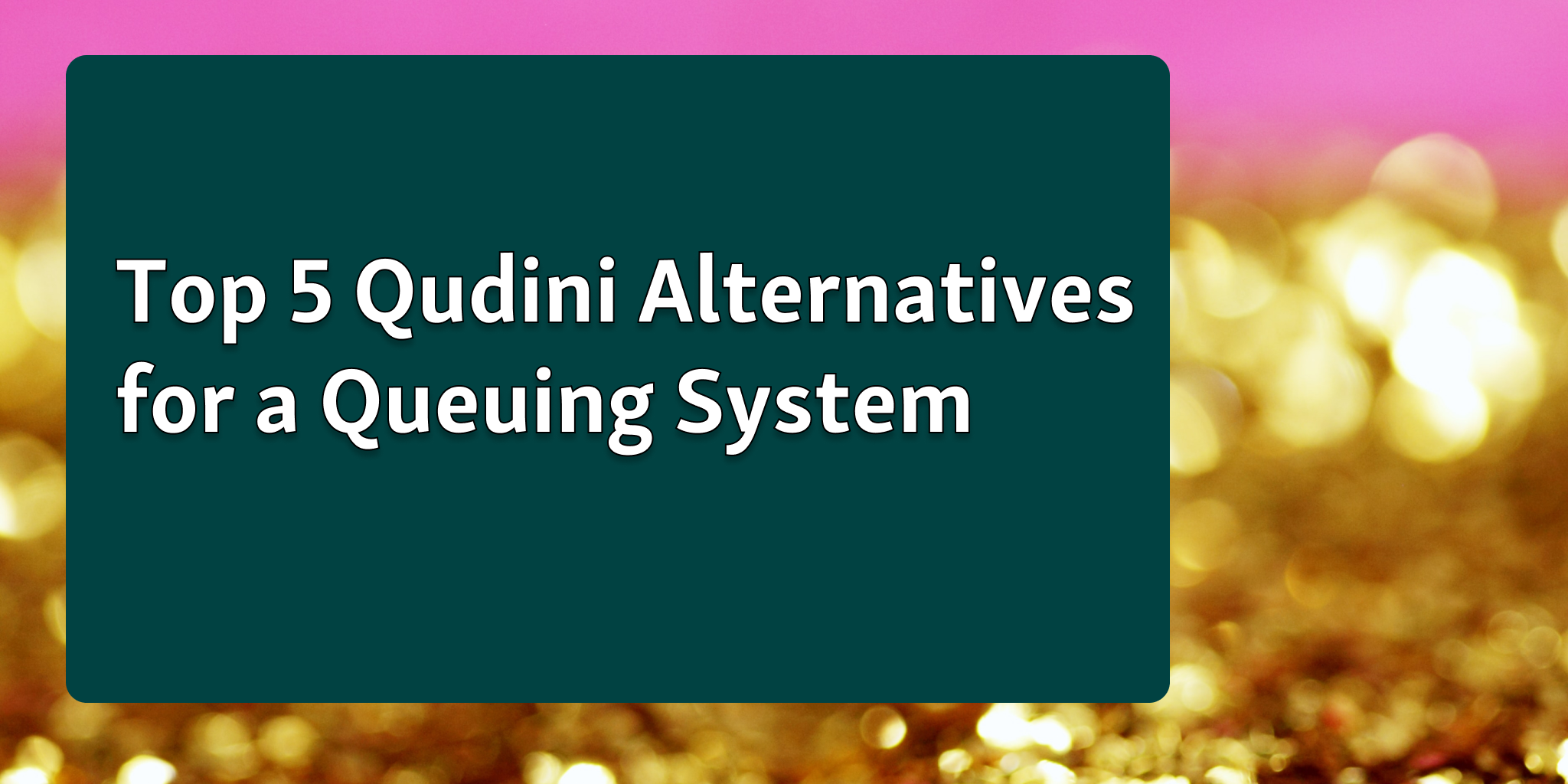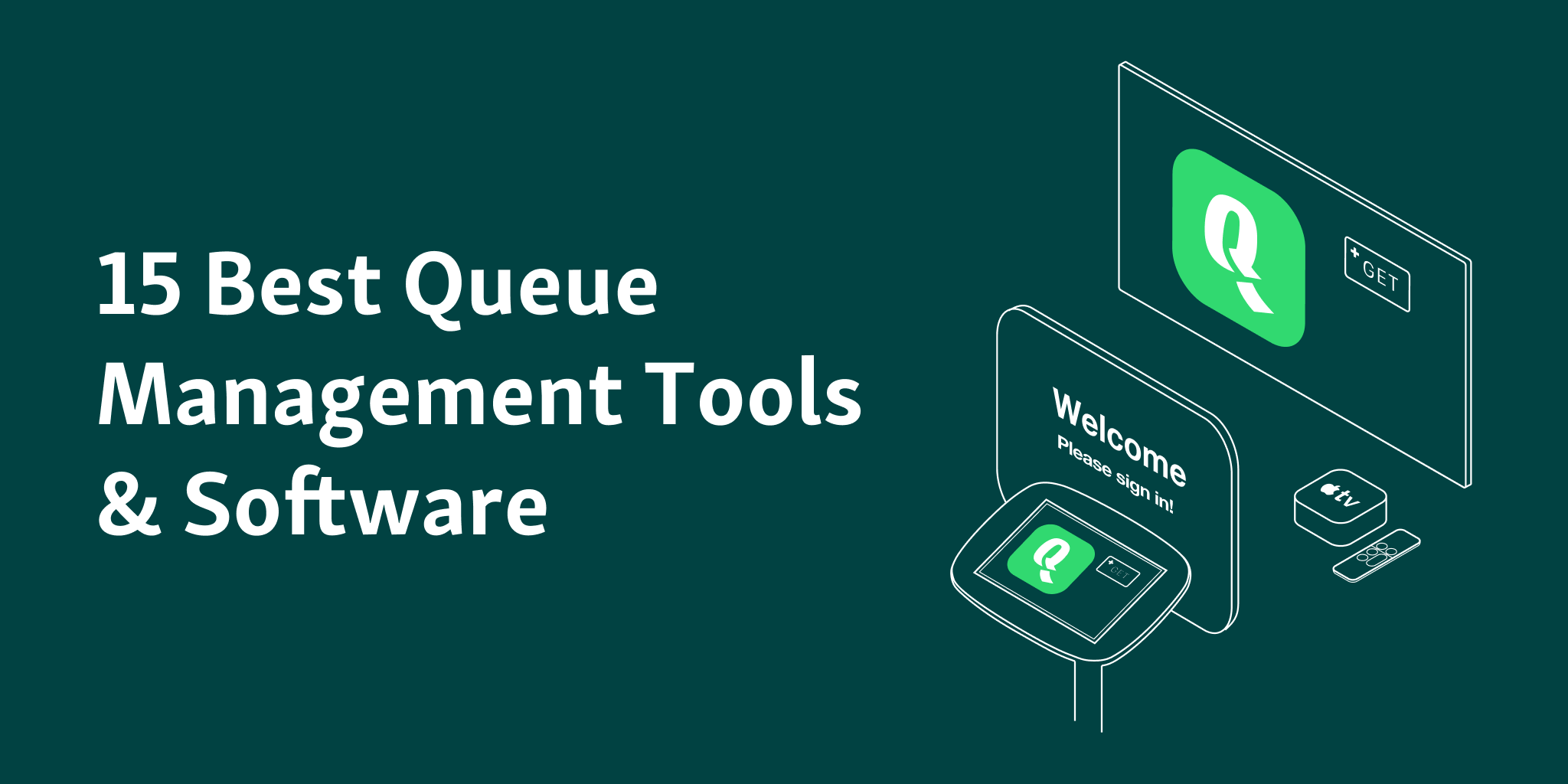Not all queue management systems are created equal.
In our rapidly-changing world, queuing systems — just like everything else — need to learn how to evolve and adapt. Sadly, only a few of them are ready to embrace digital advancements and choosing an innovative queuing system can be tricky.
One such relic among queue management systems is a so-called take-a-number system. Despite its age, we can still see it being used at DMVs, fast food restaurants, banks, post offices, pharmacies, etc.
A take-a-number system works exactly as you’d imagine — you arrive at a location, take a printed-out numbered ticket, and wait for your turn.
Sounds good at face value, but be sure to read the fine print. What they don’t tell you about queue ticketing systems is that you’re forced to spend every waking moment glued to the screen, waiting for an agonizingly long period until your number finally appears.
“Well, duh! That’s what being in a queue is like,” you could say. And that’s exactly the problem we’re facing — instead of improving the queuing situation, take-a-number systems program us to take these horrible waits for granted.
In this article, we will explore some of the immediate concerns with using take-a-number queuing systems in your business, and reveal the solution you need to adopt right away.
Let’s kick off our list of issues with a common example.
Bonus: List of 15 Best Queue Management System 2023 Edition
Lack of Clear Explanation: A Look at McDonald’s Self-Service System
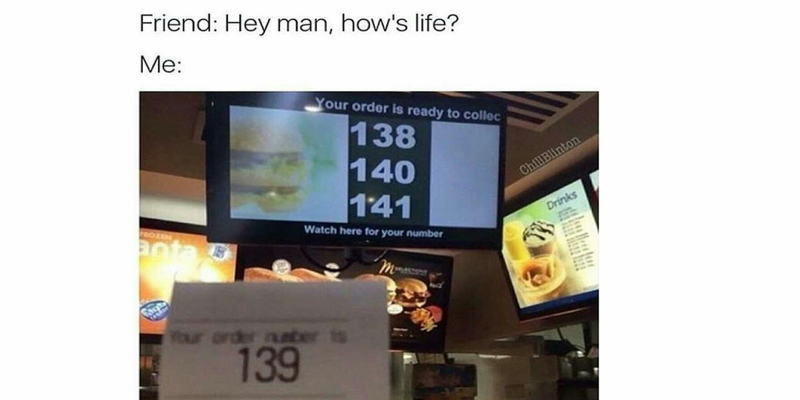
Back when McDonald’s first unveiled its plan to introduce self-service kiosks, there was a number of articles expressing worry. People were afraid that McDonald’s was to, allegedly, replace 2,500 human cashiers with digital kiosks.
In reality, however, McDonald’s wanted to implement these kiosks in conjunction with human employees. The aim of rolling out self-service kiosks is to allow customers to order and pay without exacerbating the waiting problem.
Despite its general successes, this system does have its flaws. Let’s look at a major one.
Even though the self-service system at McDonald’s employs a seemingly numbered ticket system, there’s not much sense in calling it a numbered system.
Imagine this: you arrive at McDonald’s, see that there are way too many people standing in line, and turn to self-service kiosks. You make an order without a hitch and receive a number to help you track your order.
Naturally, if your order’s number is, say, 090, you expect it to be completed before 091. However, that’s not usually the case.
In fact, orders 091, 092 and even 099 may go up before yours.
In theory, this sounds logical. Some of the orders take more time, some of the orders overlap — after all, it’s faster to serve five separate Big Macs than five different meals.
But then, what are these numbers for? Even knowing the reason behind your order coming later than others, it leaves you with the feeling of having your hopes raised and promptly smashed.
This is not only the case with fast food restaurants. The problem is that a numbered system doesn’t take into account the internal priority system.
Even if it works as intended, the fact is, a ticketing system does not communicate the length of your wait. Your number can be the next in line, and yet you may wait for another hour before you’re served.
In short, take-a-number systems create expectations that they simply cannot satisfy. And in terms of issues with ticketing queue machines, we’re just getting started.
It’s all downhill from here.
Lack of Personalization

Another, and some may say the most important, flaw of a system with numbered tickets is that it disregards personal information of your customers. By applying a uniformed approach, it destroys any possibility of personalizing the process for your customers.
In theory, treating everyone equally sounds good. If one customer is assigned a number, so is every other customer.
But you can't ignore the power of remembering your customers' names.
When a business takes some effort to remember your name, it’s heart-warming. Sure, there may be instances of names pronounced wrong — but it’s the thought that counts.
And yes, no one likes their names being butchered, but being assigned no name at all? This is straight up demeaning.
Nowadays, a number instead of a name is only given to a soulless machinery, cattle, or cellmates. And even then, many jails know better than to keep dehumanizing prisoners.
(And hey, cows deserve your respect too!)
So what have your customers done to be treated this way? As a business, you should try your damnedest to better understand your customers. The practice of exchanging names is a mark of mutual respect and great level of comfort.
In business terms, it's the first step towards delivering an excellent customer experience. But for some reason, many companies continue to insist on acting out this ridiculous play:
Hi, glad to have business with you! My name is James.
Woah, that’s too many letters to keep in memory. We’ll be calling you No.104865 from now on.
Of course, there’s merit in using codes in places with a big overlap between the names — say, a university. Even then, these numbers should be used in conjunction with real names.
In most cases, however, a first name and an initial is enough to recognize a person.
Assigning a number to your customers is a sure way to tell your customers, “You’ll speak when spoken to”. For a client, there’s nothing more depressing than realizing that the only thing businesses see in them is their money.
Queuing systems like Qminder use first name-based approach. In these systems, visitors need to check-in to waiting lines by entering their name. Besides providing an excellent customer service, this will help you to collect service data and actually know whom you are serving.
Let's talk about service data a little bit more.
Lack of a Data-Driven Approach

Compared to digital queuing solutions, take-a-number systems provide little to no useful business information.
When signing up, customers can, at best, pick a queue. This alerts staff to the customer’s arrival but gives no relevant information to work with before the actual service begins.
What is their purpose of visit? What questions these clients need to resolve? Do they have special requirements? Does your staff need to prepare documents?
None of these questions can be answered with a simple take-a-number system.
Keep in mind: Collecting customer data is not a nice bonus to have. It’s a must, something that a queue management system needs to provide. The purpose of data collection is to both better serve a customer and better understand them.
Then, there’s internal information — like wait time, service time, idle time, the number of no-shows, etc. This data remains mostly invisible to customers, but it can greatly help you further improve your service.
For example, by finding out that one service point sees more customers than the rest, you can delegate more employees there, or open a new similar service desk.
The point is, you get accurate, hard number for you to base your decisions on. In today’s business world, where everyone is playing this numbers game, it is important to err on the side of more data — and more customer feedback.
A take-a-number system simply can’t compete with that. Since numbered tickets exist outside the digital realm, the few numbers they do provide are not reliable enough.
Take-a-Number Systems Are Wasting Resources

This last point is a minor one, but it still rings true. One of the disadvantages of a take-a-number management system is that it relies on printing materials.
To print out numbered tickets, a take-a-number uses paper rolls that are installed inside it.
We’ve already talked about how one Canadian college decided against their paper-based queue solution in favor of more eco-friendly systems. With environmental conservation becoming a major talking point, it’s not something your business can freely ignore.
But even if you take paper-wasting out of the equation — after all, it can be recycled paper materials, at no cost to Mother Nature — there’s still this issue of using actual, tangible resources.
And the worst thing about this kind of resources? You can run out of them at the most unfortunate moment.
Have you ever had to wait a few minutes at a checkout point because they needed to replace a cash register roll? Remember: The last moments of a buying experience are the most crucial ones.
While not the end of the world in any way, this can and will affect your customers in a negative way. When trying to make customer journey as smooth as possible, every little detail counts.
A digital-based queuing solution doesn’t have this problem. It employs actual technological advancements, thereby feeling modern, sleek, and innovative.
And hey, it’s eco-friendly as well.
Hopefully, we've managed to not only convince you that take-a-number systems are outdated, but also help you understand that an electronic queue management system is a push forward that your business needs.
From data insights to personalization, to reducing your queuing headaches, Qminder is an all-in-one business solutions that ticket machines can't compete with.
Sounds like a bunch of sales talk? See it for yourself. Sign up for Qminder and get 14 days of free trial.

